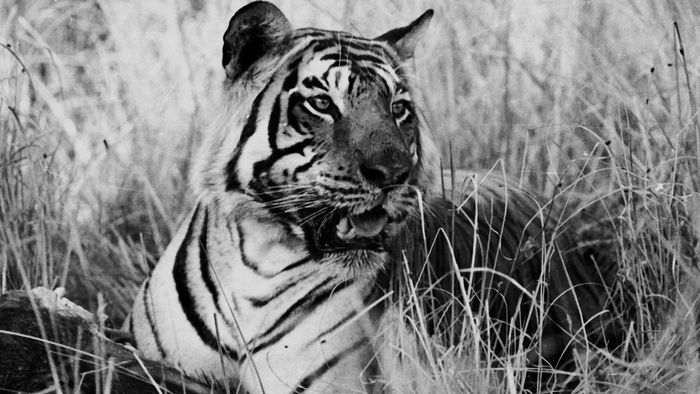'Legendary Tigers of India': How one man’s 50-year devotion revived Ranthambore’s tiger legacy
"Tigers were shot at point-blank range, “innocently looking at the man with the gun”. Nearly 30 known tigers vanished, leaving just 15 terrified survivors around the lakes".

- Aug 12, 2025,
- Updated Aug 12, 2025, 10:48 AM IST
From the edge of the screen, she emerges—a tigress, her coat burnished gold under the rising sun, her stripes flowing like ink brushed on silk. She walks with the authority of a ruler inspecting her kingdom. This is Ranthambore—and the first tiger Valmik Thapar would ever truly know. The scene opens the BBC documentary Legendary Tigers of India, directed and produced by Mike Birkhead and Beth Jones, and edited by Matt Blandford, Nigel Buck, Marc Davies, and Mark Fletcher.
The camera follows the tigress, but the voice belongs to Valmik Thapar. He takes viewers back to the late 1970s, when Ranthambore was not yet synonymous with tigers. At the time, Thapar was a city man, a filmmaker in Delhi surrounded by traffic, deadlines, and the hum of urban life. On a whim to escape, he boarded a train to Rajasthan, finding not a tourist haven but a wild, untamed forest—unknown to the world and unwanted by most.
The love at first sight: Padmini
Here, Thapar met Fatha Singh, the park’s director, who spoke of tigers as elusive shadows. Then, by the mirrored surface of a lake, he saw her—Padmini—standing as though she had always ruled the earth. In that instant, he fell in love: with her, with Ranthambore, and with the idea of living alongside these creatures.
Padmini had five cubs, four of which survived, marking the beginning of the Ranthambore clan of tigers. She was mother to Noon, who claimed the prime territory around the lakes, rich in prey, after hunters had gone. Around this time, Thapar bought land on the edge of Ranthambore to live alongside and study the tigers. Noon’s mate, a large male called Genghis, appeared suddenly in 1983, seeking a vast territory with multiple females and abundant prey. One extraordinary moment saw Genghis make a kill during a gathering of sambar deer feeding among 120 crocodiles—a testament to the rare ecosystem where prey faced two top predators.
Machli and the Generations after
Next came Machli, the Lake Tigress who taught Thapar the most about tiger life. Machli attempted to overthrow her mother to claim Rajbagh, the ruined royal garden. Her mother sensed the threat. Though Machli seemed a little afraid, she stood her ground, and soon her mother left—perhaps to avoid constant conflict or to sacrifice her territory.
Later that year, a male called Bumbu Ram arrived. Gradually, he moved closer to Machli, leaving scent markers. Machli eventually mated with him, and her genetic legacy is now found in 75% of Ranthambore’s tigers, including her daughter Krishna.
Krishna herself became a fierce figure in the late 2010s, and her cub Arrowhead, displayed unpredictable behavior, charging into water to hunt large crocodiles and engaging in playful fights with enormous turtles.
'Innocently looking at the man with a gun'
The documentary also delves into the historical threats to India’s tigers. The dark era began in the 18th century with European colonizers bringing firearms and a taste for big-game hunting. Royalty, nobles, and foreign dignitaries organized mass hunts that decimated populations. Even the Duke of Edinburgh and Queen Elizabeth hunted tigers in Ranthambore, further glorifying the slaughter. This relentless killing, driven by status, sport, and ignorance of ecological consequences, pushed the species to the brink. By the early 1970s, only about 1,800 wild tigers remained in India. Project Tiger, launched in 1973, established nine reserves, including Ranthambore.
But poaching for the Chinese bone trade took a severe toll. Tigers were shot at point-blank range, “innocently looking at the man with the gun”. Nearly 30 known tigers vanished, leaving just 15 terrified survivors around the lakes. Thapar responded by working with locals, writing books, and producing TV series to raise awareness.
A half-century of devotion
'Legendary Tigers of India' ultimately becomes more than a wildlife documentary—it is a fifty-year chronicle of Valmik Thapar’s devotion to the tigers of Ranthambore. Starting with 30 tigers 50 years ago, the reserve now boasts 70. The film captures the matriarchal dynasty of five tigresses—Padmini, Noon, Machli, Krishna, and Arrowhead—queens whose reigns shaped the jungle’s destiny.
Every frame is a painting
Visually, Legendary Tigers of India is a triumph. The cinematography captures Ranthambore in all its moods—from the gold-saturated dawns when tigers prowl the lake’s edge, to the silent, dust-hazed afternoons when prey animals hold their breath. The camera doesn’t just record wildlife; it frames it like fine art, each stripe, ripple, and shaft of light treated with painterly precision.
A royal procession through Ranthambore
Directors Mike Birkhead and Beth Jones balance intimacy with scale—bringing us eye-level with tigresses as they pad silently through undergrowth, then pulling back to reveal the vast, ancient landscapes they rule. The direction is patient when it needs to be, letting moments breathe, but also dynamic in the most dramatic encounters, such as crocodile hunts or territorial fights.
Cuts that beat like a tiger’s heart
The editing, handled by Matt Blandford, Nigel Buck, Marc Davies, and Mark Fletcher, is masterful in pacing. Fast-cut sequences propel the action forward—whether following the sudden charge of a predator or cutting between generations of tigresses—while slower cuts linger on the quiet grace of tiger life. This rhythmic interplay between stillness and urgency mirrors the pulse of the jungle itself, keeping viewers both emotionally connected and visually thrilled.
'Legendary Tigers of India' will be available to stream on BBC Player on Prime Video and Tata Play Binge from August 15.